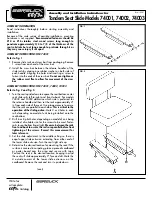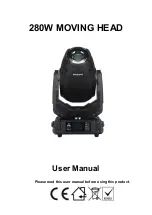
SHOULDER PACEMAKER
TM
- User Manual 04-06EN
10
The device has a degree of protection for the casings of electrical equipment equal to IP 22 (protected against solid bodies greater than 12mm
in diameter, protected from falling drops of water with a maximum tilt of 15°).
The FCC ID of the Shoulder Pacemaker
TM
is 2ATZJ-SPM and it is affixed in the back
side of the device as show in the figures.
This Device complies with Part 15 of the FCC rules subject to the following two
conditions:
1) This device may not cause harmful interference
2) This device must accept any interference received, including interference that
may cause undesired operation
TECHNICAL FEATURES
General information
Battery. The Shoulder Pacemaker
TM
device is equipped with a rechargeable Li-ion battery with a capacity of 550 mAh. Fully charged, its
operating time is about 2 hours, depending on the intensity of stimulation. The charging time is approximately 1 hour at room temperature.
Do not exceed the temperature range between 0 ° C to +35 ° C in the charging environment. Typical battery life under the conditions of use is 2
years.
Adapter: Use an adapter capable of providing 5V charging voltage and current of at least 275mA, compliant with IEC 60601-1.
Neurostimulation
All electrical specifications are provided for a minimum impedance of 500 ohms per channel and may present tolerances no greater than 10%
with respect to the indicated value.
Outputs: two channels electrically isolated from each other
Shape of the pulses: compensated biphasic wave, in order to exclude any component of direct current and avoid residual polarizations on the
skin
Maximum pulse intensity (instantaneous value): 300 mA
Maximum intensity of the pulses (intended as an effective value mediated on 1s): <10 mA
Duration of a pulse: 10 to 200 μs
Maximum amount of electricity for one pulse: 10.2 microcoulombs
Pulse frequency: from 1 to 100 Hz
Appendix A shows the tables with the electrical reference values for the stimulation signals when the load parameters and stimulation
intensity vary in the typical scenarios of operation.
RF data
Emission and reception frequency band: 2.4 [GHz] ISM (2.4-2.4835 GHz)
Characteristics of the modulation type and frequency: FSK / GFSK and 0-QPSK
Effective emission power: 4.5 [dBm] at -40 ° C, 3.5 [dBm] at 25 ° C, 2.1 [dBm] at 105 °C.
Date related to electromagnetic compatibility (EMC)
The Shoulder Pacemaker
TM
device is designed for the use in authorized environments in compliance with the safety standard for EMC EN
60601-1-2. The Shoulder Pacemaker
TM
device emits very weak levels in the radiofrequency (RF) range and should therefore not interfere with
nearby electronic equipment (radios, computers, telephones, etc.).
The Shoulder Pacemaker
TM
device is designed to overcome the predictable disturbances caused by electrostatic discharges, magnetic fields of
the main power supply or radio frequency emitters. Nevertheless, it is not possible to guarantee that the stimulator will not be influenced by
powerful RF (radio frequency) fields from other sources. For more detailed information on electromagnetic emission and immunity, contact
the manufacturer.
Summary of Contents for SHOULDER PACEMAKER SPM Series
Page 1: ......






































